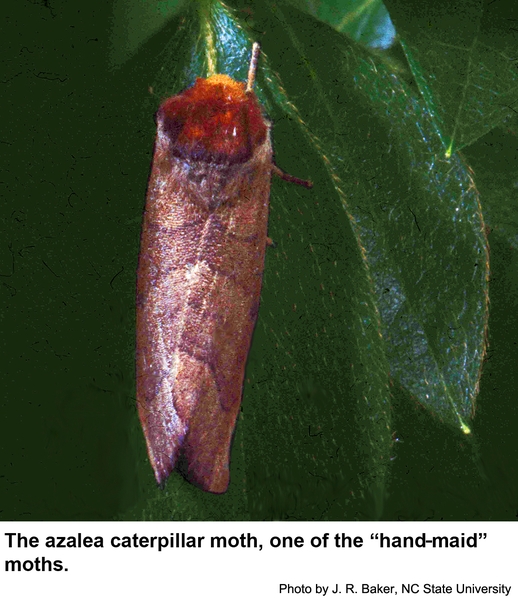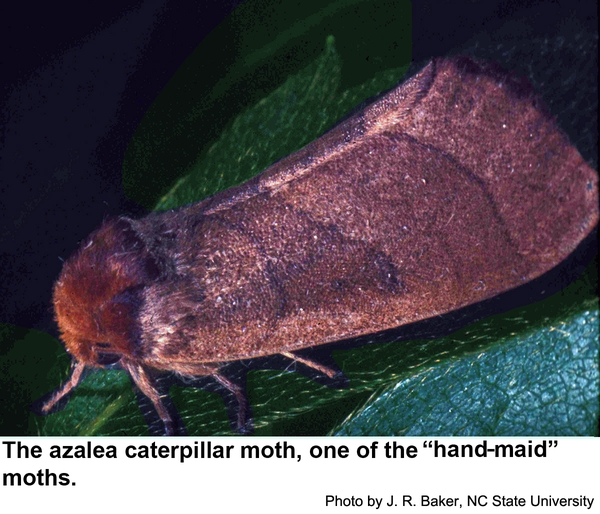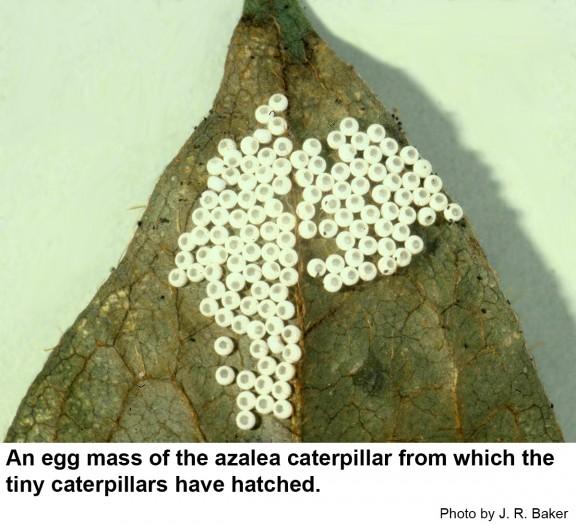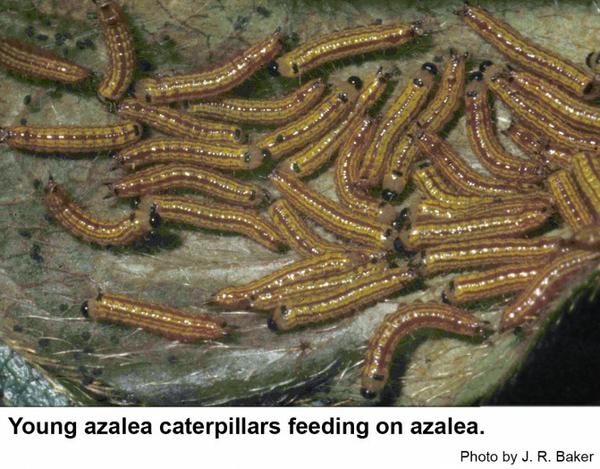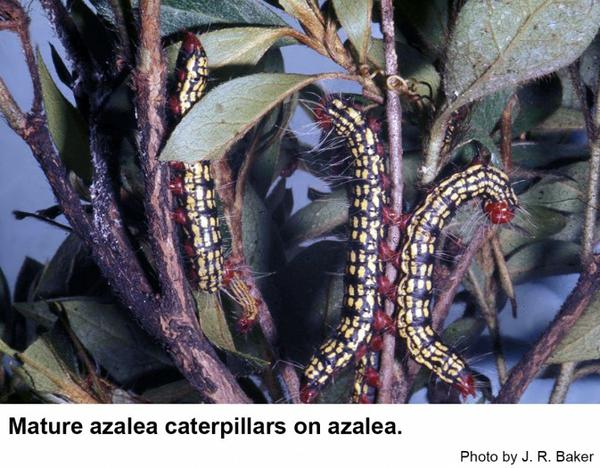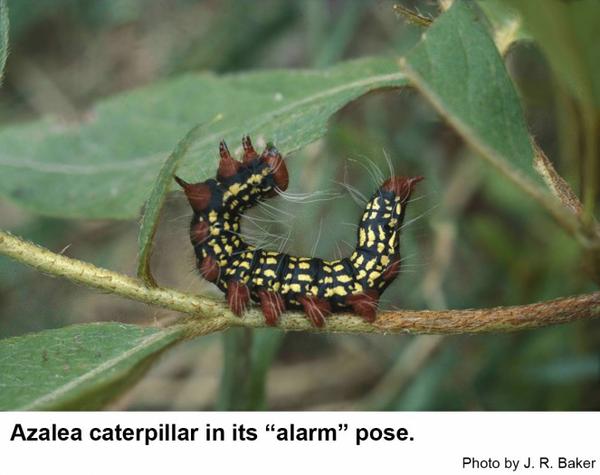Description and Biology
Young azalea caterpillars, Datana major, are small green worms that grow into medium purple worms and then into large black- and yellow-striped worms with reddish heads and prolegs. They are sometimes called "Labor Day" worms, because so many folks discover them around Labor Day. Azalea caterpillars are gregarious. When disturbed, the caterpillars often raise their heads and tails so the body is C-shaped. There is only one generation per year. When fully grown, the caterpillars crawl down and burrow into the soil to pupate. There they spent the winter and spring. The moths emerge in early summer and deposit their eggs in masses of 80 to 100 on a leaf. The brownish moths have darker lines across the forewings and a cinamon colored thorax. They belong to a group of moths called hand-maid moths, perhaps because these moths are so attractive.
Host Plants
Azaleas are the primary host for the azalea caterpillar, but these caterpillars have been found on blueberry, Andromeda, apple, and even oak. As the worms mature, they do more and more damage. Most of the damage occurs in August and September. Because the worms feed in groups, they often completely defoliate a portion of a shrub before they are detected.
Residential Recommendation
Azalea caterpillars are gregarious, which makes their control relatively easy. They can be shaken from the shrub and trampled underfoot. Sevin, Orthene, and pyrethrin or pyrethroid-based insecticides should give adequate control as well. When used as directed, pyrethroids are very toxic to insects but are not particularly hazardous to humans and pets (other than fish-avoid using pyrethroids around pools, ponds, and streams).
References
- Insect and Related Pests of Shrubs. Baker, J. R. ed. 1980. NC Agricultural Extension Service publication AG-189. 199 pp.
- Common name: azalea caterpillar, scientific name: Datana major Grote & Robinson (Insecta: Lepidoptera: Notodontidae). Dekle, G. W. and T. R. Fasulo. 2007 (revised). Featured Creatures, Entomol. & Nematol. FDACS/DPI Univ. Florida
- Extension Plant Pathology Publications and Factsheets
- Horticultural Science Publications
- North Carolina Agricultural Chemicals Manual
For assistance with a specific problem, contact your local Cooperative Extension Center
This Factsheet has not been peer reviewed.
Publication date: June 22, 2013
Reviewed/Revised: Aug. 12, 2020
Recommendations for the use of agricultural chemicals are included in this publication as a convenience to the reader. The use of brand names and any mention or listing of commercial products or services in this publication does not imply endorsement by NC State University or N.C. A&T State University nor discrimination against similar products or services not mentioned. Individuals who use agricultural chemicals are responsible for ensuring that the intended use complies with current regulations and conforms to the product label. Be sure to obtain current information about usage regulations and examine a current product label before applying any chemical. For assistance, contact your local N.C. Cooperative Extension county center.
N.C. Cooperative Extension prohibits discrimination and harassment regardless of age, color, disability, family and marital status, gender identity, national origin, political beliefs, race, religion, sex (including pregnancy), sexual orientation and veteran status.

